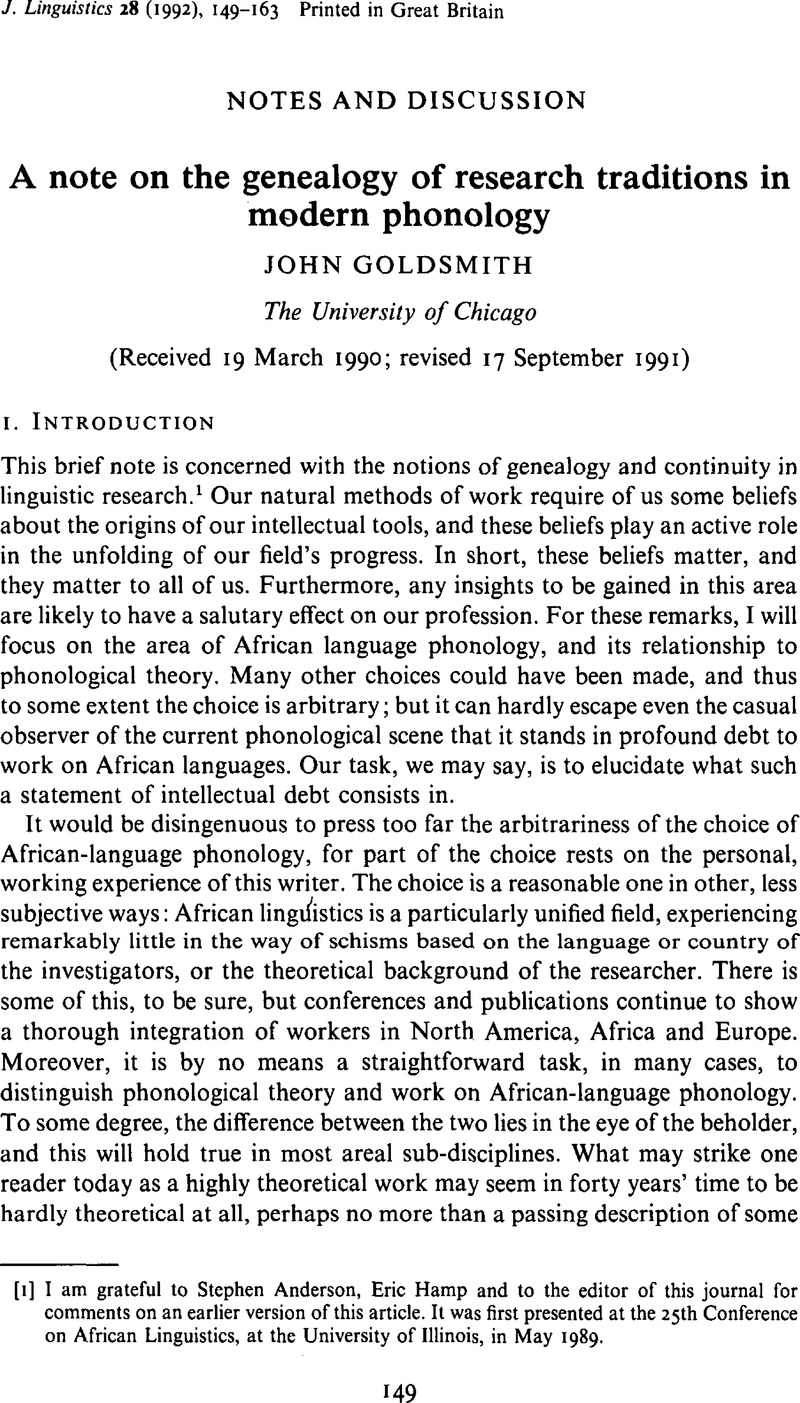Crossref Citations
This article has been cited by the following publications. This list is generated based on data provided by Crossref.
Ogden, Richard
and
Local, John K.
1994.
Disentangling autosegments from prosodies: a note on the misrepresentation of a research tradition in phonology.
Journal of Linguistics,
Vol. 30,
Issue. 2,
p.
477.
Goldsmith, John
1994.
Disentangling autosegments: a response.
Journal of Linguistics,
Vol. 30,
Issue. 2,
p.
499.
Encrevé, Pierre
2000.
The Old and the New: Some Remarks on Phonology and its History.
Folia Linguistica,
Vol. 34,
Issue. 1-2,
Koerner, E.F.K
2003.
Remarks on the origins of morphophonemics in American structuralist linguistics.
Language & Communication,
Vol. 23,
Issue. 1,
p.
1.
Ntihirageza, Jeanine
2007.
Phonological Readjustment and Multimodular Interaction: Evidence from Kirundi Language Games.
Journal of Universal Language,
Vol. 8,
Issue. 1,
p.
51.
Carr, Philip
and
Honeybone, Patrick
2007.
English phonology and linguistic theory: an introduction to issues, and to ‘Issues in English Phonology’.
Language Sciences,
Vol. 29,
Issue. 2-3,
p.
117.
2014.
Phonological Development.
p.
277.
Goldsmith, John A.
2015.
Las ideas lingüísticas de John R. Firth. By Elena Battaner Moro.
Historiographia Linguistica,
Vol. 42,
Issue. 2-3,
p.
428.
Chela-Flores, Godsuno
2017.
Language ideologies, intervarietal conflict and their repercussions on language and society: the case of the Hispanic dialect complex.
Dialectologia et Geolinguistica,
Vol. 25,
Issue. 1,
p.
123.





